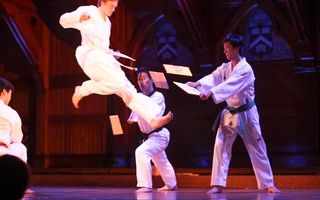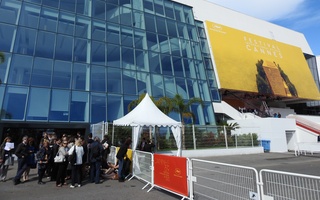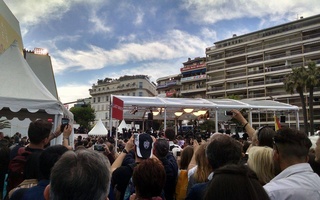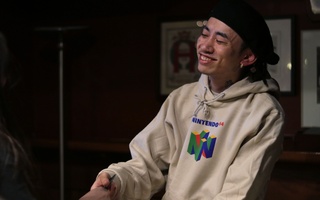{shortcode-00eedcc98986bd0eedb0b2cfe1e9ba6eba7f04d3}
Students, faculty, alumni, and community members from the Boston area filed into Sever 113 for a film screening of Disney Pixar’s “Coco” on Thursday, Nov. 1. The screening preceded a Q&A session with Academy Award-winning producer Darla K. Anderson and lead cultural consultant Marcela Davison Avilés ’80. The event was sponsored by Adams House, the Harvard University Department of Romance Languages, the Cultural Agents Initiative at Harvard, and the Office for the Arts. For many audience members, the event was a fun and enlightening way to engage in the Mexican holiday Día de Muertos (Oct. 31 to Nov. 2) by learning about the cultural significance of “Coco” and some of the behind-the-scenes processes involved in the making of the film.
Before the movie screening, Senior Preceptor in Romance Languages and Literatures María Luisa Parra-Velasco gave a short introduction to the cultural context of the film. “It is wonderful, in particular at this time, to see a beautiful and powerful Mexican story being told the right way,” she said. “When my students and I have discussed this movie, we all notice the care with which Mexican culture is being presented. But what is culture, and what is Mexican about it?” To answer this question, Parra-Velasco told the audience a few things to look out for to see how Mexican culture is presented in the film: the visuals, the characters’ interactions with each other, the food, the music, and the importance of remembering to keep loved ones alive in the world of the dead.
After the screening, audience members had the chance to ask Anderson and Davison Avilés questions. The two discussed the inspiration behind the film, the significance of music as a storytelling device in Mexican culture, and the film’s role in amplifying a community’s voice.
“It was an opportunity to tell a story about something that was part of my culture, that would be told in a way that would be relevant to people outside of my culture, and to be heard for once,” Davison Avilés said. “The end result was a kind of flipping of that power dynamic of who gets to tell a story and who doesn't get to tell a story. We got to tell our story and own our story.”
Davison Avilés also spoke about what she thought made “Coco” a special film. “This was a film that was a combination of a story within mythology, as opposed to fantasy,” she said. “Mythology is part of culture, and culture is part of identity. Culture informs identity.”
Anderson talked about the process of working with cultural consultants to create “Coco,” and how the task required a combination of efforts of many people — not just cultural consultants, but also musicians and other community members in Mexico. “We had to be very vulnerable. We brought quite a few people in, which we’ve never done before, but then it turned out to be the best ever thing.”
Larimar Fuentes, a clinical research coordinator at the Massachusetts General Hospital, was an audience member at the event. “As a Hispanic, I feel attached to [Día de Muertos] culturally, so I wanted to be involved with it in some sort of way, and I thought this was a really great way to do it.”

















